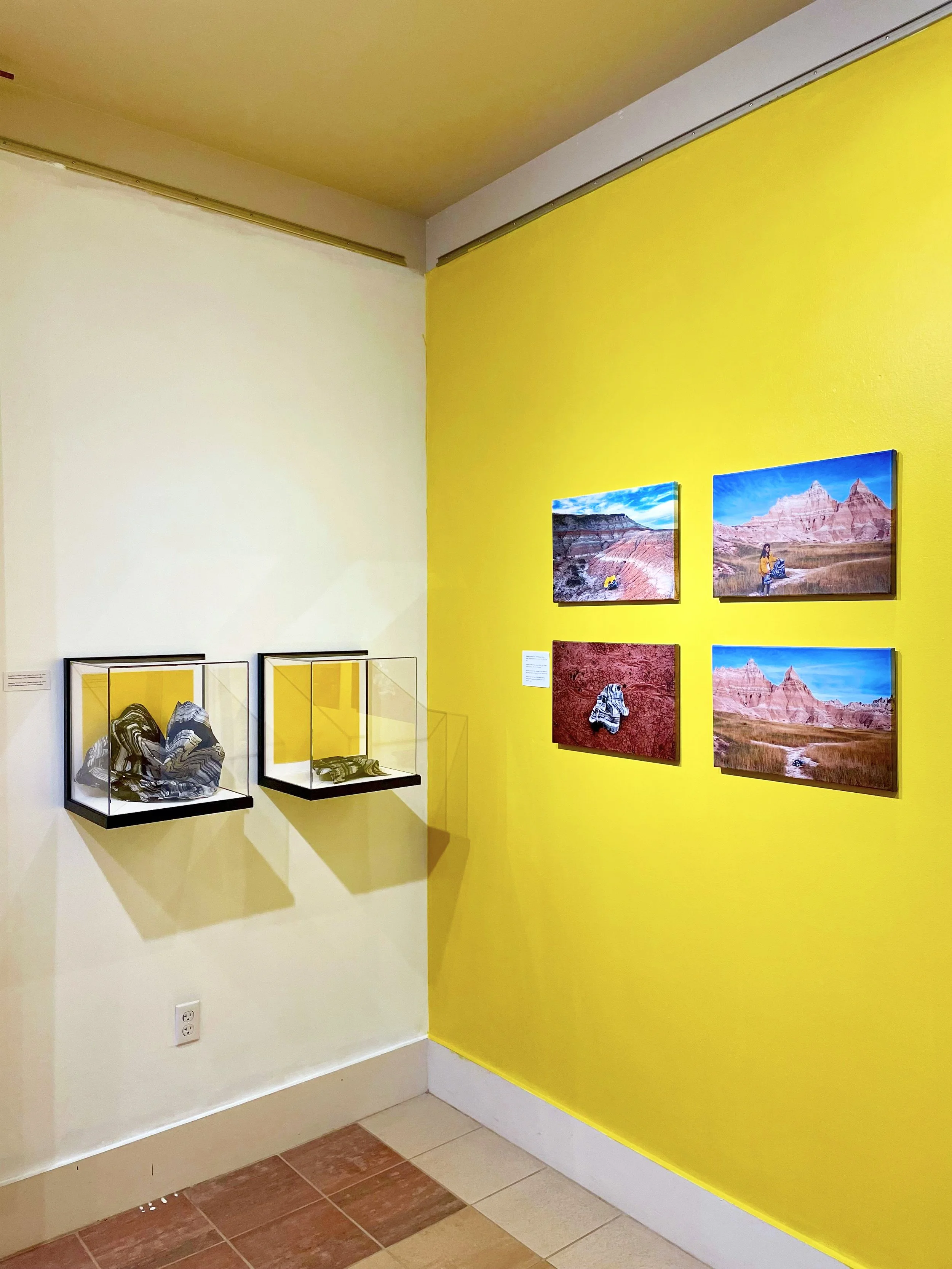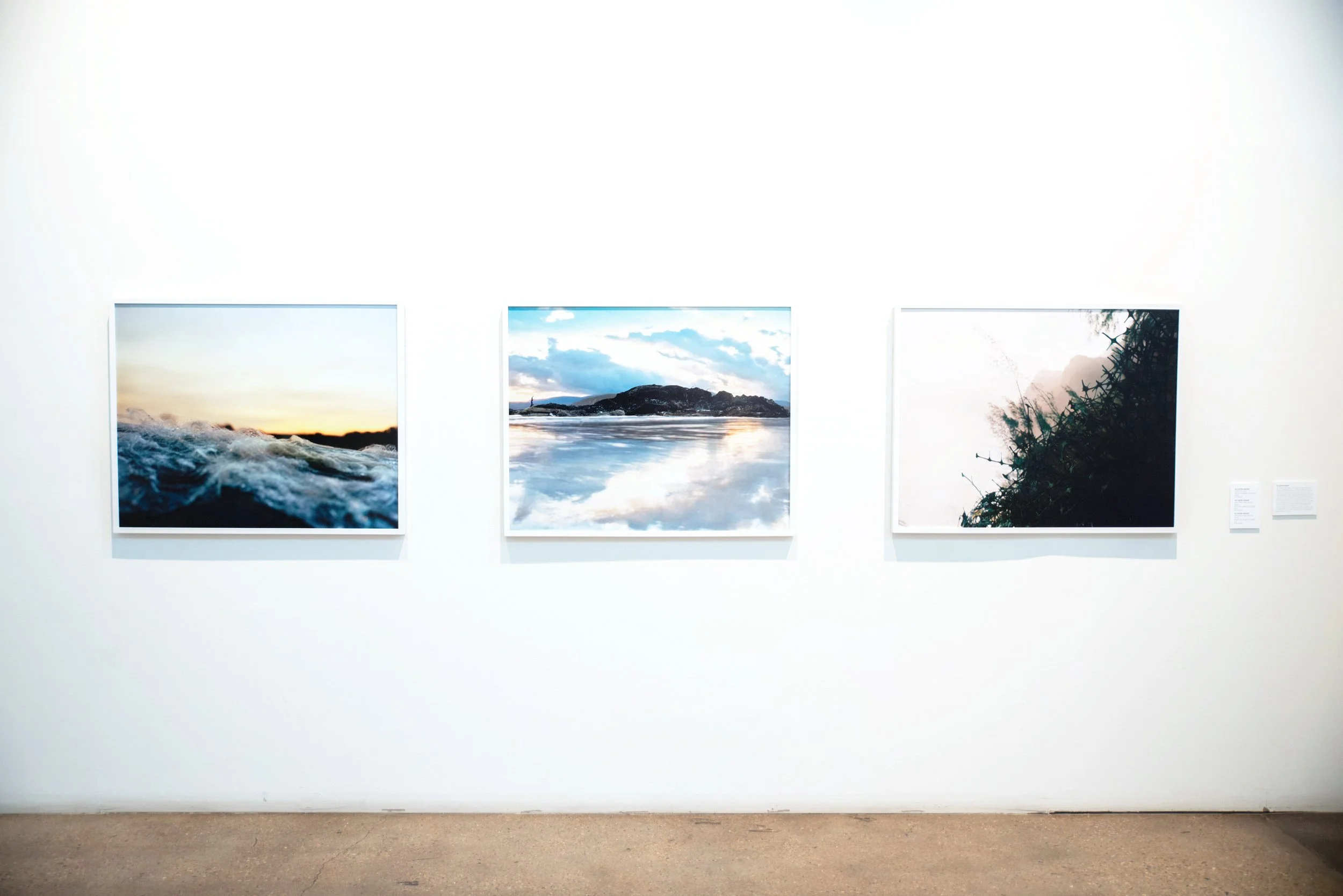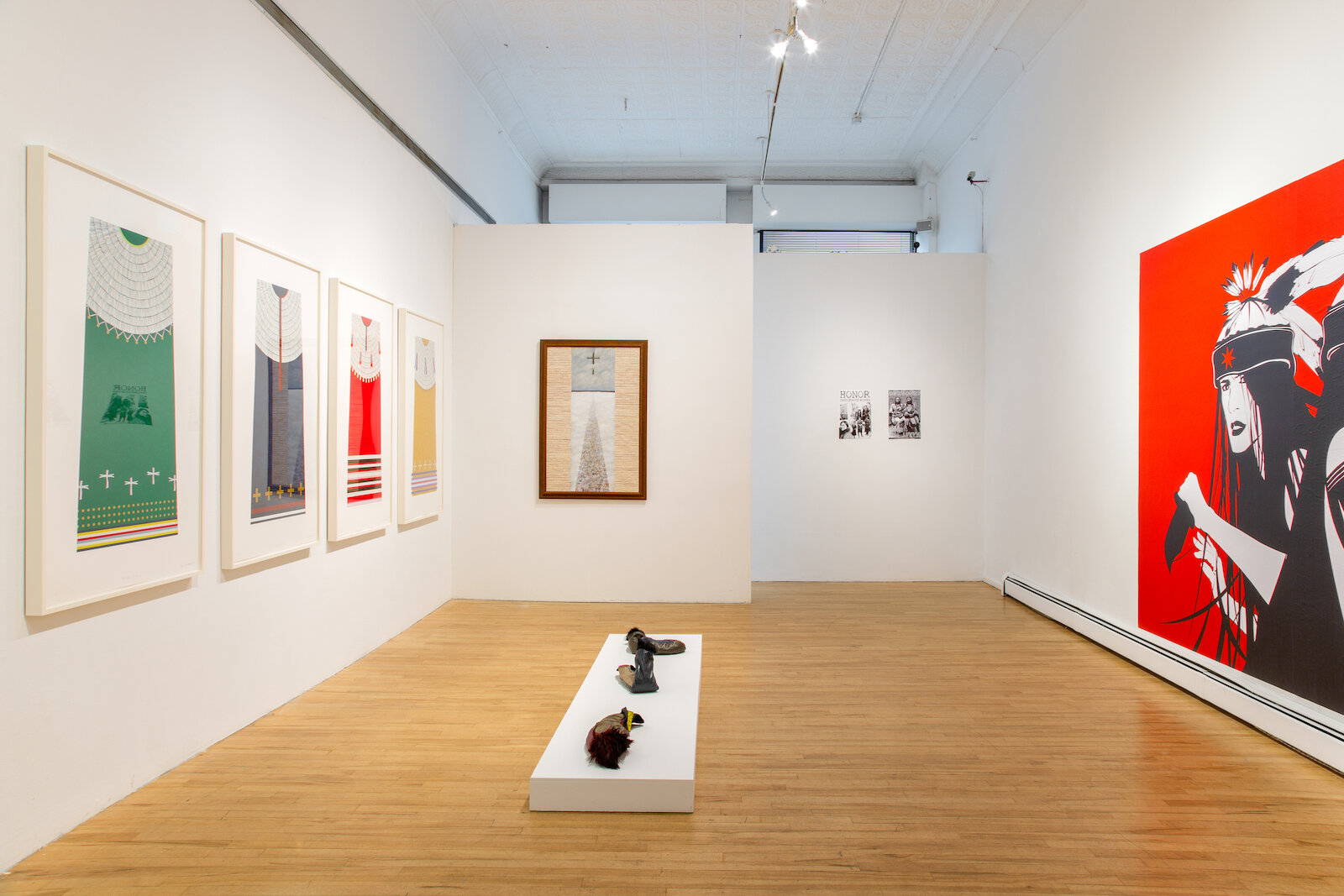Elizabeth “Betsy” S. Hawley is an art historian, writer, and curator specializing in modern and contemporary art and art of the Americas.






Angelica Trimble-Yanu: Iyeska and Returning
University of South Alabama Archaeology Museum
September 3 – December 6, 2024
A solo exhibition featuring the geographic formations of the Ȟe Sápa (Black Hills) and Makȟóšiča (Badlands) landscapes of contemporary Oglála Lakota artist Angelica Trimble-Yanu’s South Dakota homelands, addressing complex issues of being, belonging, and relationality. She often works in photographs and monographic prints, both of which feature in Angelica Trimble-Yanu: Iyeska and Returning. "Iyeska" translates to "interpreter," although it has also historically been used as a derogatory term for community members who are of both Native and non-Native heritage. Trimble-Yanu is of Lakota as well as settler descent, and while she spent time as a toddler on the reservation, she subsequently grew up elsewhere. Returning to her sacred homelands, reconnecting with relatives, ruminating on her mixed heritage, and reclaiming the term "Iyeska" are the guiding themes behind the works on view.












An exhibition countering the way the phrase “American border” typically conjures up the land-based geopolitical boundaries of the contiguous United States, usually concerning the U.S.-Canada and, more frequently, U.S.-Mexico border. The artists in this exhibition contest such continental connotations, reconceptualizing U.S. boundaries as borderwaters. Their projects emphasize the shorelines of the U.S. and its island regions; the historical and contemporary significance of waterways—ranging from inland rivers to international oceanic passages—and their inextricable linkage with colonialist, imperialist U.S. policies; and the ecological inseparability of waterways that ensures changes in one area’s borderwaters have global effects.
Artists: Sabrina Chou, Lionel Cruet, Alejandro Durán, Marcella Ernest, Allison Grant, las polígonas (Nicole Antebi, Ingrid Leyva, Celina Galicia, and Sonia Desai Rayka), Erin LeAnn Mitchell, Aviva Rahmani, Emma Robbins, Hana Yoshihata









Santa Clara University Art and Art History Gallery
September 18 – October 27, 2023
An exhibition featuring the work of five contemporary U.S.-based Indigenous artists. The pieces on view underscore the survivance (survival + resistance) of the artists’ cultural systems of knowledge, particularly as related to place. Each artist imbues their works with meaning specific to their own community and experience, while at the same time revealing the place-based significance of landscape in many Native worldviews.
Artists: Katie Dorame, Catherine Herrera, Patrick Dean Hubbell, Terran Last Gun, Angelica Trimble-Yanu









An exhibition that draws inspiration from the entwined histories of women’s rights movements and Native rights movements, presenting the works of contemporary Native North American artists who identify as feminist and whose practices address urgent intersectional issues regarding decolonization efforts, feminine aesthetic traditions, Indigenous ecocriticism, customs of gender fluidity, violence against Native women and Two-Spirit peoples, and Indigenous Futurisms. The breadth of these topics and their historical and contemporary relevance suggest the discursive potential of Native feminisms, taken up by the participating artists in ways that visually vary but uniformly insist on Native survivance.
Artists: Demian DinéYazhi’ with R.I.S.E.: Radical Indigenous Survivance & Empowerment, Marcella Ernest, Maria Hupfield, Elizabeth LaPensée, Natani Notah, Sheldon Raymore, Dyani White Hawk, Jolene Nenibah Yazzie









African American Artists of the Great Migration
Philadelphia Museum of Art
August 24 – December 2, 2018
An exhibition showcasing works from the PMA permanent collection produced by African American artists during the Great Migration. From the late 1910s through the 1960s, some six million African Americans left the American South and headed north, seeking better economic opportunities and an escape from Jim Crow racism. The artists represented in the show captured imagery related to their lives in the urban North and memories of life in the rural South; expressed the social tensions stemming from segregation and other forms of system racism; and addressed the two World Wars fought during this time, when African Americans served in a segregated U.S. military.
Artists: Elizabeth Catlett, Claude Clarke, William Henry Johnson, Jacob Lawrence, Norman Lewis, Horace Pippin, John Woodrow Wilson, Hale Woodruff






Frank Lloyd Wright at 150: Unpacking the Archive
Section: Nakoma Country Club
An exhibition marking the 150th anniversary of the American architect’s birth. The show comprises approximately 450 works made from the 1890s through the 1950s, including architectural drawings, models, building fragments, films, television broadcasts, print media, furniture, tableware, textiles, paintings, photographs, and scrapbooks. Structured as an anthology rather than a comprehensive, monographic presentation of Wright’s work, the exhibition is divided into 12 sections, each curated by a scholar who investigates a key object or cluster of objects from the Frank Lloyd Wright Foundation Archives, interpreting and contextualizing it, and juxtaposing it with other works from the Archives, from MoMA, or from outside collections. The exhibition seeks to open up Wright’s work to critical inquiry and debate, and to introduce experts and general audiences alike to new angles and interpretations of this extraordinary architect.
Hawley explores Wright’s appropriation of Native North American cultures and stereotypes thereof in the preparatory drawings for his “Nakoma Country Club,” an ultimately unrealized commission for a golf resort in Madison, WI.